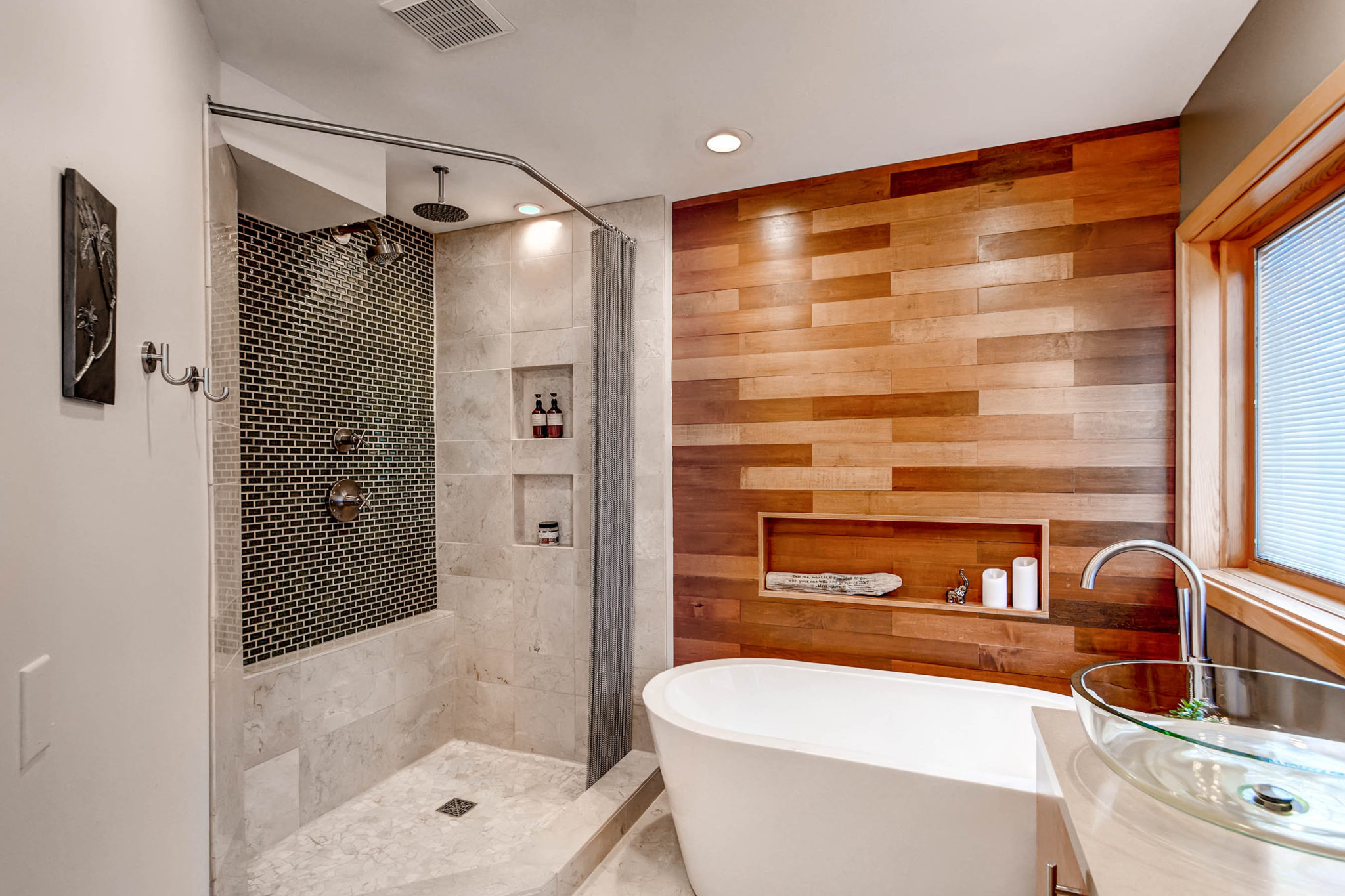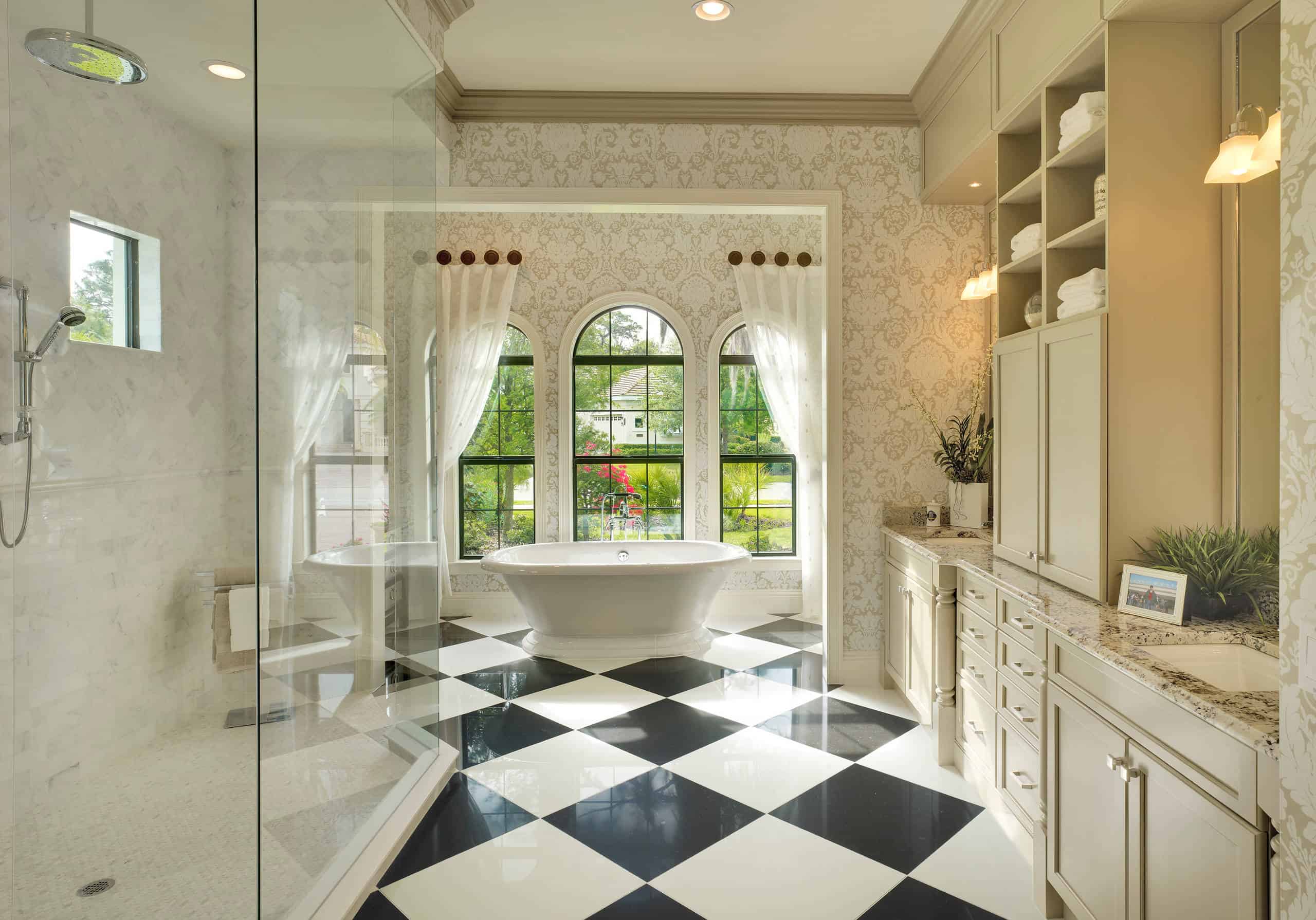Mediterranean Design Elements: Mediterranean Master Bathroom Ideas

Mediterranean bathroom design draws inspiration from the warm, sun-drenched landscapes and rich cultural heritage of the Mediterranean region. It embodies a relaxed, inviting, and timeless aesthetic that blends seamlessly with the natural surroundings.
Color Palettes
Mediterranean color palettes are characterized by their vibrant, earthy tones that evoke the region’s natural beauty. These palettes often feature warm neutrals like beige, terracotta, and cream, accented with pops of bright blues, yellows, and greens.
- Warm Neutrals: Beige, terracotta, cream, and sandy browns create a sense of warmth and serenity, reminiscent of sun-baked walls and sandy beaches.
- Vibrant Accents: Bright blues, yellows, and greens add a touch of energy and vibrancy, reflecting the Mediterranean’s azure skies, blooming gardens, and lush vegetation.
Materials
Mediterranean bathrooms often feature natural materials that reflect the region’s rustic charm and connection to nature. These materials create a sense of warmth, authenticity, and durability.
- Stone: Travertine, limestone, and marble are popular choices for flooring, countertops, and accent walls, adding a touch of elegance and sophistication.
- Terracotta: This baked clay tile is a classic Mediterranean material, often used for flooring, accent walls, and decorative elements. Its warm, earthy tones and rustic texture create a welcoming and inviting atmosphere.
- Wood: Reclaimed wood beams, wooden cabinets, and wooden accents add warmth and texture to the space.
Architectural Elements
Mediterranean bathroom design incorporates architectural elements that reflect the region’s rich history and cultural influences. These elements create a sense of character and charm.
- Arched doorways and windows: Arched openings are a hallmark of Mediterranean architecture, adding a touch of elegance and sophistication. They create a sense of grandeur and invite natural light into the space.
- Ornate tilework: Intricate tile patterns and mosaics are commonly found in Mediterranean bathrooms, adding a touch of artistry and cultural heritage.
- Wrought iron accents: Wrought iron fixtures, such as towel racks, light fixtures, and mirrors, add a touch of rustic charm and sophistication.
Popular Mediterranean Architectural Styles
Mediterranean bathroom design draws inspiration from various architectural styles prevalent in the region.
- Tuscan: Tuscan style is characterized by its rustic charm and use of natural materials like stone, terracotta, and wood. It features warm, earthy color palettes and simple, elegant designs.
- Spanish Colonial: Spanish Colonial style is known for its vibrant colors, intricate tilework, and use of wrought iron accents. It often features courtyards and fountains, creating a sense of outdoor living.
- Moorish: Moorish style is characterized by its intricate geometric patterns, ornate tilework, and use of arches and domes. It often features a blend of Islamic and Spanish influences, creating a unique and exotic aesthetic.
Incorporating Traditional Mediterranean Patterns and Motifs
Mediterranean patterns and motifs can be incorporated into bathroom decor to add a touch of cultural heritage and visual interest.
- Geometric patterns: Intricate geometric patterns, often found in Moorish architecture, can be incorporated into tilework, rugs, and textiles.
- Floral motifs: Floral patterns, inspired by the Mediterranean’s lush gardens, can be incorporated into wallpaper, curtains, and towels.
- Ceramic accents: Hand-painted ceramic tiles, bowls, and vases can add a touch of artistry and cultural heritage to the space.
Color Palette and Lighting

A Mediterranean bathroom design should evoke a sense of warmth, serenity, and connection to nature. This is achieved through a carefully curated color palette and strategic lighting. The colors used should reflect the hues of the Mediterranean landscape, with earthy tones serving as the foundation and vibrant accents adding pops of energy.
Earthy Tones and Vibrant Accents
The foundation of a Mediterranean bathroom color palette lies in earthy tones. These colors, inspired by the natural elements of the region, create a sense of grounding and tranquility. Here are some examples:
* Warm Whites: Whitewashed walls and surfaces are common in Mediterranean homes, reflecting the bright sun and creating a sense of openness. Off-white or cream tones can be used to add warmth and depth.
* Earthy Neutrals: Beige, taupe, and terracotta are excellent choices for incorporating the natural tones of the Mediterranean landscape. These colors can be used on walls, floors, and even in the bathroom accessories.
* Deep Blues and Greens: These colors evoke the deep waters of the Mediterranean Sea and the lush vegetation of the region. Use these colors sparingly as accents to add a touch of vibrancy.
Vibrant accents add a touch of energy and personality to the bathroom. These colors should be used sparingly, as accents on towels, rugs, and decorative elements.
* Terracotta Red: A rich, earthy red that is reminiscent of the clay tiles commonly used in Mediterranean architecture.
* Sunny Yellows: A cheerful and bright color that adds warmth and energy to the space.
* Azure Blue: A calming and serene color that evokes the Mediterranean Sea.
Natural Light and Its Impact
Mediterranean bathrooms are designed to maximize natural light, which is an integral part of the design aesthetic. Large windows that open to the outdoors allow natural light to flood the space, creating a bright and airy atmosphere. This natural light is essential for creating a sense of openness and connection to the surrounding environment.
Lighting Fixtures
Lighting plays a crucial role in creating the desired ambiance in a Mediterranean bathroom. The fixtures chosen should complement the overall design aesthetic and enhance the natural light that enters the space.
* Wrought Iron Chandeliers: Wrought iron chandeliers add a touch of rustic elegance and complement the earthy tones of the color palette. These fixtures can be hung over the bathtub or vanity to provide a warm and inviting glow.
* Sconces: Wrought iron sconces with frosted glass shades are an excellent choice for providing ambient lighting. They can be placed on either side of the mirror or on the walls to create a cozy and intimate atmosphere.
* Pendant Lights: Pendant lights with woven rattan or fabric shades can add a touch of warmth and texture to the space. They are ideal for illuminating specific areas, such as the vanity or the shower.
* Recessed Lighting: Recessed lighting can be used to provide general illumination, especially in areas where natural light is limited. This type of lighting should be used sparingly to avoid creating a harsh and sterile atmosphere.
Mood Board
Imagine a Mediterranean bathroom with whitewashed walls and terracotta tile floors. Sunlight streams through a large window, illuminating the space. A wrought iron chandelier hangs over the bathtub, casting a warm glow. Sconces with frosted glass shades flank the mirror, providing ambient lighting for the vanity. Pendant lights with woven rattan shades illuminate the shower area, creating a cozy and inviting atmosphere.
Fixtures and Furniture

The fixtures and furniture you choose for your Mediterranean bathroom play a crucial role in achieving the desired ambiance. Opting for pieces that reflect the region’s rich history and craftsmanship will elevate the overall aesthetic.
Materials for Vanities, Countertops, and Tubs, Mediterranean master bathroom ideas
The materials you choose for your vanity, countertop, and tub can significantly impact the look and feel of your Mediterranean bathroom. Here’s a list of suitable materials:
- Marble: Marble is a classic choice for Mediterranean bathrooms, adding a touch of elegance and sophistication. Its natural veining and warm tones create a luxurious atmosphere.
- Limestone: Limestone is another popular option, offering a more rustic and earthy feel. Its subtle textures and soft hues complement the Mediterranean style.
- Ceramic: Ceramic tiles are versatile and affordable, making them a practical choice for vanities, countertops, and tubs. They come in a wide range of colors and patterns, allowing you to create a unique look.
Incorporating Traditional Elements
Mediterranean bathrooms often feature traditional elements that enhance their charm and character.
- Arched Mirrors: Arched mirrors are a defining feature of Mediterranean style. Their elegant curves add a touch of sophistication and reflect light beautifully.
- Decorative Tiles: Intricate tilework is a hallmark of Mediterranean design. Consider using patterned tiles to create a mosaic backsplash or accent wall.
- Hand-Painted Sinks: Hand-painted sinks are a unique and eye-catching addition to a Mediterranean bathroom. They often feature intricate designs and vibrant colors that add a touch of artistry.
Natural Materials in Bathroom Furniture
Natural materials like wicker and wood are integral to creating a warm and inviting atmosphere in a Mediterranean bathroom.
- Wicker Baskets: Wicker baskets are ideal for storing towels, toiletries, and other bathroom essentials. Their natural texture and earthy tones complement the overall aesthetic.
- Wooden Shelves: Wooden shelves provide a practical and stylish solution for organizing bathroom items. They can be used to display decorative items or store towels and toiletries.
